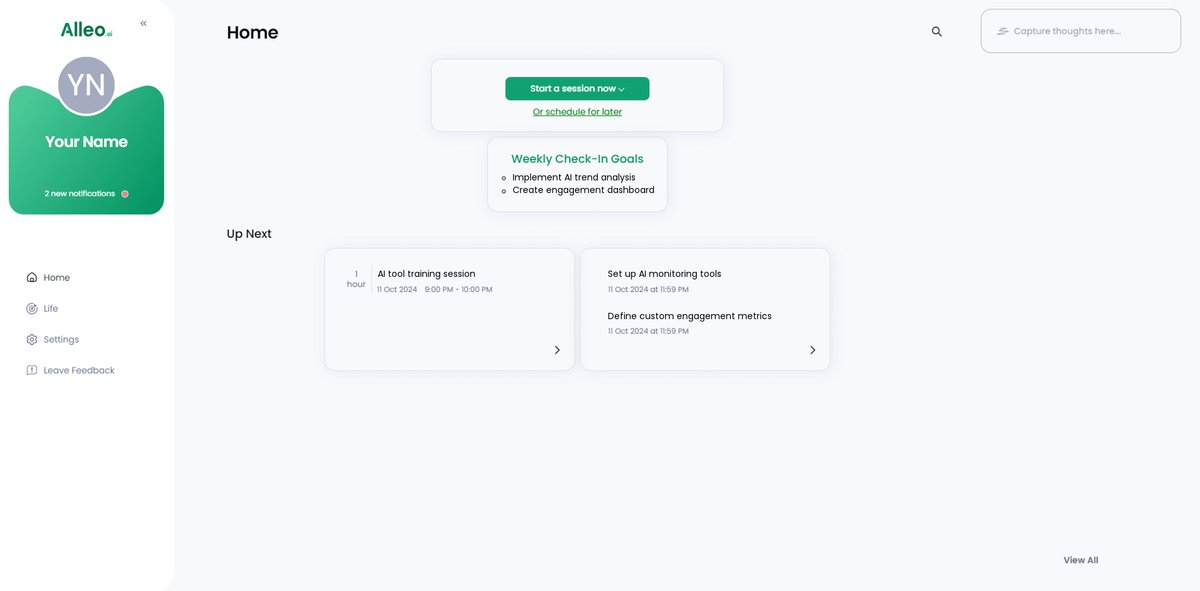7 Powerful Strategies for Media Executives to Master Content Data Trends in 2024
Are you struggling to keep up with the rapid changes in content data trend analysis and the overwhelming volume of data in the media industry?
As a life coach, I’ve helped many professionals navigate these challenges. In my experience working with media executives, I often see the struggle to leverage diverse content performance metrics effectively for data-driven editorial decision-making.
In this article, you’ll discover practical strategies to analyze and utilize content data trends. We’ll explore tools and techniques for audience segmentation analysis, cross-platform data integration, and real-time content analytics to help you stay ahead in the competitive media landscape.
Let’s dive in.

The Challenge of Analyzing Diverse Content Data
Navigating diverse content data trend analysis is a significant challenge for media executives. The sheer variety of content types, including short-form videos, AR/VR experiences, and social media posts, complicates data analysis and content performance metrics.
Integrating and interpreting this data requires sophisticated tools and strategies, including cross-platform data integration and real-time content analytics.
In my experience, many clients initially struggle with the overwhelming volume and diversity of data. This complexity often leads to missed opportunities and inefficient decision-making in content data trend analysis.
For example, I have seen executives overwhelmed by the constant influx of new content trends, making it difficult to stay ahead using predictive content modeling.
Understanding market trends is crucial. Current trends impact content consumption and audience engagement significantly, necessitating audience segmentation analysis.
Without clear insights, executives risk falling behind in the competitive media landscape, missing opportunities for engagement rate optimization.
In summary, the problem is not just the volume of data but its variety and rapid evolution. Addressing this challenge requires a strategic approach to content data trend analysis and the right tools for multi-channel attribution.

Roadmap to Mastering Content Data Trends
Overcoming this challenge requires a few key steps. Here are the main areas to focus on to make progress in content data trend analysis.
- Implement AI-powered content trend analysis tools: Use AI to monitor and analyze content performance metrics.
- Develop cross-platform engagement metric dashboards: Aggregate data from various platforms into unified dashboards for cross-platform data integration.
- Conduct regular short-form video performance audits: Evaluate performance benchmarks and gather audience feedback for engagement rate optimization.
- Create AI chatbots for real-time audience insights: Develop chatbots to interact and gather real-time content analytics.
- Establish data-sharing partnerships with influencers: Partner with influencers to share data and collaborate on campaigns for multi-channel attribution.
- Utilize predictive analytics for content scheduling: Use historical data to predict optimal content posting times through predictive content modeling.
- Integrate AR/VR data into audience behavior analysis: Collect and analyze data from AR/VR interactions for behavioral targeting strategies.
Let’s dive in!
1: Implement AI-powered content trend analysis tools
Implementing AI-powered content data trend analysis tools is essential for media executives to stay ahead in the rapidly evolving media landscape.
Actionable Steps:
- Monitor trends: Use AI tools to track emerging trends and content performance metrics across various content platforms.
- Correlate data: Align trends with audience engagement metrics to gauge relevance and perform audience segmentation analysis.
- Update models: Regularly refine AI models to adapt to new data trends and enhance predictive content modeling.
Explanation: Utilizing AI-powered tools for content data trend analysis helps you stay updated with the latest content trends.
This approach enables you to make informed decisions and stay competitive through real-time content analytics and engagement rate optimization.
For more on how AI is revolutionizing industries, check out this article.
By leveraging AI tools, you can streamline data analysis and improve your strategic planning with data-driven editorial decision-making.

2: Develop cross-platform engagement metric dashboards
Developing cross-platform engagement metric dashboards is essential for media executives to gain a unified view of audience interactions and perform content data trend analysis.
Actionable Steps:
- Integrate data sources: Aggregate data from various social media platforms into a single dashboard using APIs for cross-platform data integration.
- Define custom metrics: Create tailored content performance metrics that align with your business objectives and audience segmentation analysis needs.
- Utilize visualization tools: Implement heat maps and trend lines to make real-time content analytics interpretation straightforward.
Explanation: By integrating data from multiple platforms, you can get a holistic view of your audience’s engagement and perform comprehensive content data trend analysis.
Custom metrics ensure that the data is relevant to your specific goals, while visualization tools make complex data easy to understand, facilitating data-driven editorial decision-making.
For more insights on this process, visit this article.
This approach will help you make informed decisions and stay competitive through effective engagement rate optimization and multi-channel attribution.

3: Conduct regular short-form video performance audits
Regular short-form video performance audits are essential for staying competitive in the fast-paced media landscape and conducting effective content data trend analysis.
Actionable Steps:
- Establish benchmarks: Set content performance metrics for different short-form video platforms. Compare your metrics with industry standards.
- Collect audience feedback: Use surveys and polls to gather insights on viewer preferences and engagement, facilitating audience segmentation analysis.
- Iterate content: Regularly update video content based on real-time content analytics. Implement A/B testing to identify top-performing formats and optimize engagement rates.
Explanation: Conducting these audits helps you understand what resonates with your audience. This approach allows you to refine your content strategy continually through data-driven editorial decision-making.
For more insights, check out this article on short-form video platforms.
Key benefits of regular performance audits include:
- Identifying trends in audience preferences through content data trend analysis
- Optimizing content for maximum engagement using behavioral targeting strategies
- Staying ahead of competitors in the short-form video space with predictive content modeling
Regular performance audits keep your content strategy aligned with audience preferences, enhancing multi-channel attribution and content personalization algorithms.

4: Create AI chatbots for real-time audience insights
Creating AI chatbots for real-time audience insights is crucial for understanding and responding to audience preferences instantly, enhancing your content data trend analysis capabilities.
Actionable Steps:
- Develop chatbots: Design AI chatbots using natural language processing (NLP) to interact seamlessly with your audience and gather real-time content analytics.
- Integrate with platforms: Embed chatbots into social media platforms to gather real-time data on audience behavior and improve cross-platform data integration.
- Analyze insights: Set up automated reports to summarize key insights from chatbot interactions, facilitating data-driven editorial decision-making.
Explanation: By implementing AI chatbots, you can collect and analyze audience data in real-time, allowing for more informed and timely decisions in your content data trend analysis.
This approach can significantly enhance your content strategy and engagement rate optimization. For more on how AI is transforming social media management, visit this article.
This strategy helps you stay connected with your audience and adapt quickly to their preferences, improving your behavioral targeting strategies and content personalization algorithms.

5: Establish data-sharing partnerships with influencers
Establishing data-sharing partnerships with influencers is crucial for amplifying your reach and gaining valuable insights for content data trend analysis.
Actionable Steps:
- Identify key influencers: Use influencer marketing platforms to find influencers whose audience aligns with your target market for effective audience segmentation analysis.
- Set up data-sharing agreements: Establish clear terms on data usage and privacy for a mutually beneficial partnership, focusing on cross-platform data integration.
- Launch joint campaigns: Collaborate on campaigns to leverage the influencer’s reach and gather insightful data. Track campaign performance to measure ROI using real-time content analytics.
Explanation: Partnering with influencers allows you to tap into their audience and gain unique insights for content performance metrics.
This strategy not only broadens your reach but also provides valuable data for refining your content strategy through behavioral targeting strategies.
For more on this topic, check out this article on social media marketing platforms.
This approach will help you optimize your campaigns and achieve better results through engagement rate optimization and data-driven editorial decision-making.

6: Utilize predictive analytics for content scheduling
Utilizing predictive analytics for content scheduling is essential for optimizing your content strategy and staying ahead through content data trend analysis.
Actionable Steps:
- Analyze historical data: Examine past content performance metrics to identify patterns. Use machine learning models for predictive insights and cross-platform data integration.
- Develop predictive models: Create models to forecast content trends. Continuously refine these predictive content modeling techniques based on new data and real-time content analytics.
- Automate scheduling: Implement tools to post content at the optimal times for engagement rate optimization. Ensure these tools integrate with your content management system for multi-channel attribution.
Explanation: These steps help predict the best times to post content, ensuring maximum engagement. Using predictive analytics and audience segmentation analysis, you can streamline your content strategy and improve audience interaction.
For further insights, check out this article.
Benefits of predictive analytics in content scheduling:
- Improved content visibility and engagement through behavioral targeting strategies
- More efficient use of resources and time with content personalization algorithms
- Data-driven editorial decision-making for content strategy
This approach will help you stay competitive and reach your audience effectively through content data trend analysis.

7: Integrate AR/VR data into audience behavior analysis
Integrating AR/VR data into audience behavior analysis and content data trend analysis is crucial for understanding how these immersive technologies impact engagement.
Actionable Steps:
- Collect interaction data: Use AR/VR platforms to gather data on how users interact with your content, enhancing your content performance metrics.
- Analyze engagement patterns: Examine the collected data to identify trends and preferences among your audience, supporting audience segmentation analysis.
- Adjust content strategy: Use insights from AR/VR data to refine and optimize your content strategy, improving engagement rate optimization.
Explanation: These steps help you gain deeper insights into your audience’s behavior with immersive content. This approach can significantly enhance your content data trend analysis and engagement.
For more on how AR/VR technologies are transforming the media landscape, visit this article.
Key areas to focus on in AR/VR data analysis:
- User engagement duration and patterns for real-time content analytics
- Content types that drive the most interaction, aiding in data-driven editorial decision-making
- User preferences for different AR/VR features, informing content personalization algorithms
By leveraging AR/VR data and content data trend analysis, you can stay ahead in the competitive media landscape.
Partner with Alleo to Master Content Data Trends
We’ve explored the challenges of analyzing diverse content data trends. Did you know you can work with Alleo to simplify this journey of content data trend analysis?
Alleo offers affordable, tailored coaching to help you navigate and master content data analysis, including content performance metrics and audience segmentation analysis. Our AI coach provides full coaching sessions like any human coach, focusing on cross-platform data integration and real-time content analytics.
Enjoy a free 14-day trial with no credit card required to explore predictive content modeling and engagement rate optimization.
Setting up an account is simple. Create a personalized plan and start working with Alleo’s coach immediately on multi-channel attribution and behavioral targeting strategies.
The coach will follow up on your progress and handle changes, helping you with content personalization algorithms. Stay accountable with text and push notifications for data-driven editorial decision-making.
Ready to get started for free? Let me show you how to enhance your content data trend analysis skills!
Step 1: Log In or Create Your Account
To begin your journey with Alleo’s AI coach and master content data trends, simply Log in to your account or create a new one to access personalized coaching sessions tailored to your media industry needs.

Step 2: Choose Your Focus – Building Better Habits and Routines
Select “Building better habits and routines” to tackle the challenge of managing diverse content data trends effectively, as consistent practices are key to staying ahead in the rapidly evolving media landscape.

Step 3: Select “Career” as Your Focus Area
Choose “Career” as your primary focus area to gain tailored insights and strategies for mastering content data trends, which will directly impact your professional growth and success in the media industry.

Step 4: Starting a Coaching Session
Begin your AI coaching journey with an intake session to establish your personalized plan for mastering content data trends, setting the foundation for your future sessions and progress.

Step 5: Viewing and Managing Goals After the Session
After your coaching session, easily track your progress by checking the goals you discussed, which will be conveniently displayed on the app’s home page for quick reference and management.

Step 6: Adding events to your calendar or app
Track your progress in mastering content data trends by adding coaching sessions, tasks, and milestones to your calendar or app, allowing you to stay organized and accountable as you implement the strategies discussed in this article.

Taking Control of Content Data Trends
Analyzing diverse content data trends can feel overwhelming. But with the right strategies, you can master content data trend analysis.
Remember, the key is using AI-powered tools, developing engagement dashboards, and conducting performance audits. These steps will help you stay ahead with content performance metrics and audience segmentation analysis.
Creating chatbots and partnering with influencers will provide real-time content analytics. Predictive content modeling and AR/VR data integration will refine your content strategy further, enabling data-driven editorial decision-making.
You don’t have to navigate this alone. Alleo can help simplify this journey with tailored coaching sessions focused on engagement rate optimization and multi-channel attribution.
Take control of your content data trend analysis today. Try Alleo for free and see the difference it can make in your behavioral targeting strategies and content personalization algorithms.